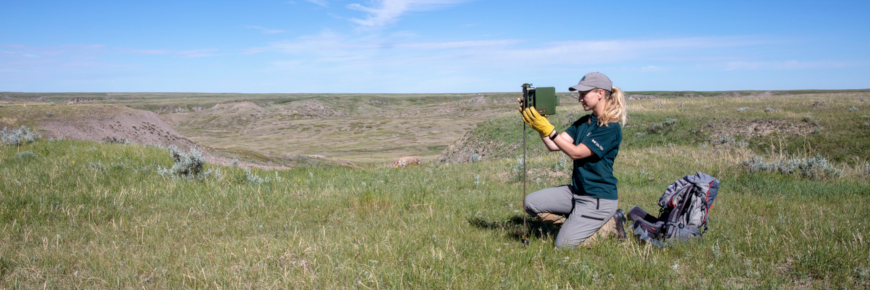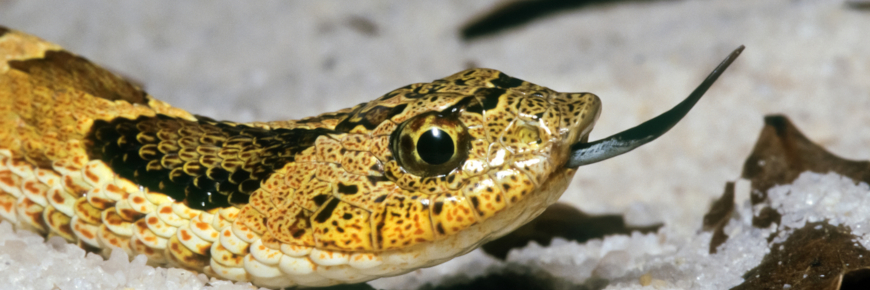
A Parks Canada staff member setting up trail cameras for monitoring, Grasslands National Park.
Inventory and monitoring
Two steps are involved in managing any system:
- knowing what’s there
- checking on its status from time to time
…In other words, inventory and monitoring.
Inventory
Each park has a list of the plant and animal species that occur there, and these species are tracked using the Biotics Web Explorer. Specialized inventories take place to keep track of species at risk as well as hard-to-identify groups like insects.
Parks Canada also uses satellites and drones to update maps of plants and landforms. In addition, citizen science activities provide valuable species information that supports inventory work.

Monitoring
Ecosystem monitoring measures changes in ecosystems over time. At Parks Canada, we manage ecosystems to maintain or restore ecological integrity (EI). The Agency reports on ecological integrity in each park to show where more effort is required.
Each park identifies 2–4 ecosystems (e.g. forest, freshwater, tundra) and selects 5 of the best indicators of how each ecosystem is doing. Each ecosystem must have at least:
- one species indicator (e.g. number of songbirds)
- one process indicator (e.g. fire frequency)
- one indicator of a stress on the ecosystem (e.g. water quality)
Most indicators are measured every year, though some, like forest cover, change slowly and are only revisited every decade.

Each indicator is judged to be in good, fair or poor condition by comparing it to the relevant feature of a healthy ecosystem. For example, in assessing their species indicator, parks staff might find far fewer songbirds than would be expected for a healthy ecosystem of that region. In that case, the indicator would get a “poor” ranking. The same comparison is done for all indicators, from water quality to fire frequency. Each monitored ecosystem is judged to be in good, fair or poor condition based on the average of its indicators.
Ecosystems that are in better condition than 5 years ago are considered to be improving, while those that are in the same condition are considered maintained. Parks Canada is working to maintain or improve 92% of its ecosystems by 2023.
- Date modified :